History
Beginning as a research project in 1995, I undertook an
evaluation of a high intensity light delivery system that had been approved by
the United States Federal Drug Administration for tattoo removal. It
was soon evident why few physicians used this technique. The
original French guidelines produced unacceptable scars and burning.
Beginning with an experimental series, using common sense as well
as burn therapy guidelines, a protocol was developed for tattoo
removal all of colors and all locations at a minimal cost and at
minimal time. According to experts, the typical laser tattoo removal
may require fifteen to twenty treatments and a 50% reduction is
considered a good result. With the TOBIL (Tattoo Obliteration By
Intense Light) technique, three to five
treatments is the norm, with obliteration of the tattoo or tattoos.
The actual treatment takes less than five minutes but local
anesthetics are required.
All tattoo removals that have been employed (from dermabrasion to
laser to TOBIL) will leave some degree of scarring and loss of
pigment. Under the protocol developed for the Gang Tattoo Removal
Program of Texas, this is a minimal risk today. Topical antibiotics,
pressure, topical cortisone, and a careful routine of treatment
according to location, size, and depth of the tattoo are all
acceptable forms of tattoo treatment today.
The cost is less than one-twentieth of that required for the four
to five lasers that are employed for multicolored tattoos or the
single laser that is used for black tattoos. The cost is in
personnel, the purchase price and maintenance of lasers compared to
the TOBIL, as well as the time.
We have successfully treated more than three thousand individuals
with the TOBIL and have had occasion to observe many who have
previously had unsuccessful attempts at laser removal of their
tattoos. These options are discussed in detail with a counseling
book that shows the results of TOBIL tattoo removal.
- Dr. Tolbert S. Wilkinson, MD
Click here to download a podcast of Dr. Wilkinson presenting the TOBIL system in 2007.
Technology
The equipment used in the WTR technique is based on the Redfield "Infrared Coagulator". White light, concentrated with
a sapphire tip, covers the entire color spectrum. That's good for tattoo removal because one simple inexpensive no-maintenance machine can
effectively remove tattoos of all colors. Think of this system as a delivery of intense white halogen light to
a specific small dot, the size of a pencil eraser, which effectively shatters the tattoo pigments so that the
body's defense mechanisms can sweep it away.
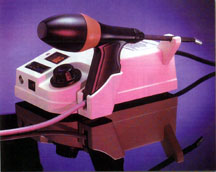
In 1995, the Innovative
Procedures Committee of the American Society of Aesthetic Plastic Surgery gave Dr. Tolbert Wilkinson
an assignment to see why no one was using a relatively inexpensive white light machine (incorrectly) labeled an
'infrared coagulator'. Although the FDA had approved it for tattoo removal there was little in the literature and
it soon became apparent why it was considered too damaging. The full spectum coverage includes blue and red blood
vessels. Without proper training, individuals were simply destroying the skin by shutting off blood supply.
Working with basic plastic surgery principals, some common sense, and the manufacturers to improve
the quality and protective aspects of the delivery system established the principles that have resulted
in the consistent results seen today. Using basic burn care principles, we have established a program
for prevention and treatment to avoid scarring which has been successful in over 99% of all cases.
To date, there have been no skin losses in any clinics established by Dr. Wilkinson.
The system established by Dr. Wilkinson is now practiced in a dozen states and six countries. Father La Buda,
the Catholic priest who oversees dozens of programs in Central America has related that in over 6,000 tattoos
removed in one year, less than a dozen scars resulted and "that's because [the patients] didn't follow
the protocol."
This technology is much less expensive to own and operate
than laser-based tattoo removal systems. Laser-based systems
operate over a narrow spectrum, attacking a small range of
colors at a time. That means that multiple treatments are
required for multi-colored tattoos. Also, a laser
system uses highly concentrated and focused laser light,
meaning that safety measures must be in place to protect
eyes and other tissues during the process. These processes
add to the cost of not only the treatment, but also of the
treatment facility. Since there is the danger of hepatitis C
in tattoo patients and lasers release a "laser plume" which
may contain live viruses, extensive laser precautions are
required that are not required with the WTR system. The
result is that laser-based systems can cost the patient
between $6000 and $7000 for a medium sized tattoo,
significantly higher than for the WTR system.
Training
Like any medical device, training is essential. Training is central to the Wilkinson Tattoo Removal
system, and is the only way to guarantee consistent results.
The basic principles are not that difficult. Light energy is
programmed in intervals of tenths of a second. There are rules
and techniques for "high scar areas" and spacing of treatment
sessions. The average tattoo is treated in three separate
sessions, spaced 30 days apart to allow revascularization.
In a typical treatment session, 30 to 40 individuals can be treated in a 4 hour period,
leaving time for presentations, counseling, and to show patients how to care for the treated
area.
The illustrated manual presented to each group and to each
individual acquaints them with the sequence of scar maturation
and use of antibiotics, pressure, and scar formulas to enhance
the end result.
The training also establishes rules of what one should not
attempt, such as removal of a complete shoulder "sleeve".
Thorough informed consent is absolutely required of all
patients, especially those with larger tattoos which will
require multiple treatments.
The training program includes two days of intensive training, all training manuals, and copies of
all materials needed for informed consent.
Dr. Tolbert S. Wilkinson, MD
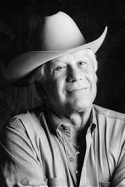 Dr. Wilkinson is a member of the Innovative Procedures Committee
of the American Society for Aesthetic Plastic Surgery, a frequent
lecturer to national and international plastic surgery
organizations, and author of three textbooks on plastic surgery
techniques. He has been involved in evaluating and improving many
new standard plastic surgery techniques including external
ultrasound for facial recontouring, an effective and inexpensive
tattoo removal program that is now a state wide entity sponsored by
the Attorney General of Texas, and is credited as the originator of
techniques including lip enhancement, "the limited incision tummy
tuck", the internal breast lift and more recently, internal repair
of the damaged breast.
Dr. Wilkinson is a member of the Innovative Procedures Committee
of the American Society for Aesthetic Plastic Surgery, a frequent
lecturer to national and international plastic surgery
organizations, and author of three textbooks on plastic surgery
techniques. He has been involved in evaluating and improving many
new standard plastic surgery techniques including external
ultrasound for facial recontouring, an effective and inexpensive
tattoo removal program that is now a state wide entity sponsored by
the Attorney General of Texas, and is credited as the originator of
techniques including lip enhancement, "the limited incision tummy
tuck", the internal breast lift and more recently, internal repair
of the damaged breast.
As the national editor of Technical Forum, the official bulletin
of the International Society of Clinical Plastic Surgeons, for 20
years, Dr. Wilkinson has access to plastic surgeons on the cutting
edge of his specialty.
His own contributions in conjunction with colleagues include many
changes in procedures that are widely accepted. These include the
“French line” small incision abdominoplasty combining external
ultrasound assisted liposuction, the submental “tuck” in conjunction
with facelifting, the mid-face lift now performed with external
ultrasound, non-surgical “facelift” for certain candidates with
external ultrasound alone (no surgical intervention), breast
augmentation procedures, and breast augmentation repairs with the
“internal bra” - an operation especially for individuals with severe
damage from previous breast surgery.
Dr. Wilkinson’s clinic was one of the first in the country to
incorporate skin care as a preparation for facial surgery, the less
invasive skin peel procedures for facial rejuvenation and a full
service spa with before and after care in body and breast
sculpturing.
By incorporating the full services of a spa into a plastic
surgery practice twenty years ago, Dr. Wilkinson's Cosmetic Surgery
Center & Spa has earned the reputation as an emulated and much
copied example of the integration of patient care with surgical
care. Fully trained aestheticians and office staff provide
pro-operative and post-operative care, skin and body rejuvenation
programs as well as the personalized service that our patients have
come to expect. Celebrities, patients from other states and
countries and many San Antonians attest to the excellence of care,
the innovative procedures that are applied, and the ongoing clinical
research into such areas such as coblation and non-surgical face
recontouring.
The majority of patients in his practice are referred from other
physicians in plastic surgery across the nation and internationally
and from satisfied and enthusiastic patients and clients of our spa.
His clinic has also earned the reputation as a center for repair of
unfortunate poor results that can occur in plastic surgery.
Books by Dr. Wilkinson include:
Dr. Wilkinson received his MD from the Duke University School of
Medicine in Durham, NC.
In 2009, Dr. Wilkinson was awarded the Community Service Award by
The Aesthetic Surgery Education and Research Foundation in
recognition of his tattoo removal program.
"I was once asked why, as an author of text books on techniques of cosmetic surgery and as a
recipient of awards for teaching and as a guest speaker and teaching courses instructor for the
Aesthetic Society, why would I become involved in something like this? The best answer is 'have you ever
had a facelift patient kiss your hand or light a candle for you?'. It's a community service that no one else
can provide."
-Dr. Tolbert Wilkinson

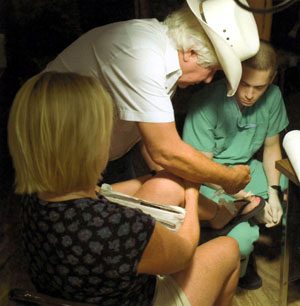
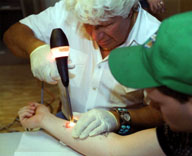
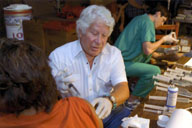
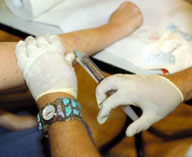
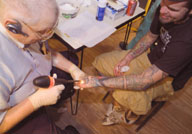

 Dr. Wilkinson is a member of the Innovative Procedures Committee
of the American Society for Aesthetic Plastic Surgery, a frequent
lecturer to national and international plastic surgery
organizations, and author of three textbooks on plastic surgery
techniques. He has been involved in evaluating and improving many
new standard plastic surgery techniques including external
ultrasound for facial recontouring, an effective and inexpensive
tattoo removal program that is now a state wide entity sponsored by
the Attorney General of Texas, and is credited as the originator of
techniques including lip enhancement, "the limited incision tummy
tuck", the internal breast lift and more recently, internal repair
of the damaged breast.
Dr. Wilkinson is a member of the Innovative Procedures Committee
of the American Society for Aesthetic Plastic Surgery, a frequent
lecturer to national and international plastic surgery
organizations, and author of three textbooks on plastic surgery
techniques. He has been involved in evaluating and improving many
new standard plastic surgery techniques including external
ultrasound for facial recontouring, an effective and inexpensive
tattoo removal program that is now a state wide entity sponsored by
the Attorney General of Texas, and is credited as the originator of
techniques including lip enhancement, "the limited incision tummy
tuck", the internal breast lift and more recently, internal repair
of the damaged breast.